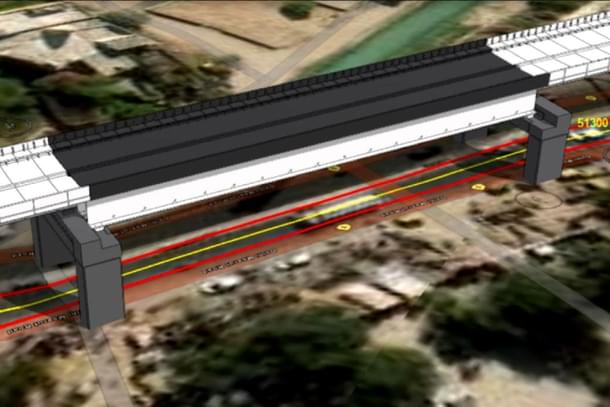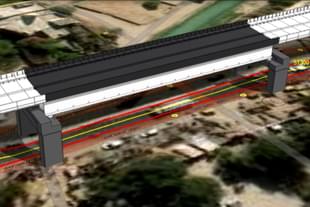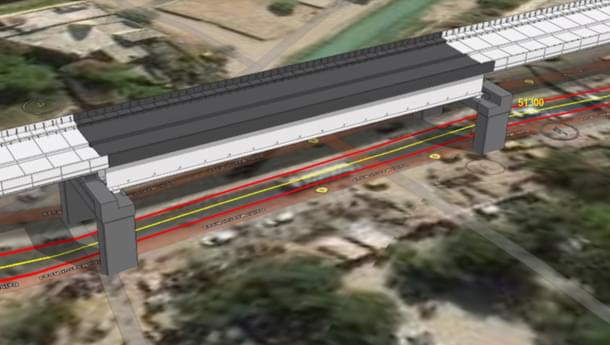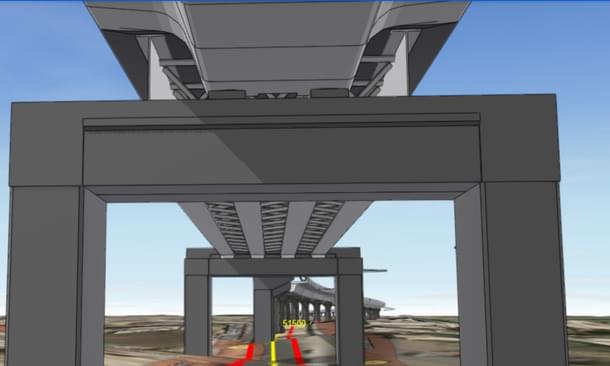Infrastructure
Delhi-Ghaziabad-Meerut: Two Special Spans To Be Installed On The RRTS Corridor In Modi Nagar
Arun Kumar Das
Sep 17, 2022, 01:30 PM | Updated 01:30 PM IST
Save & read from anywhere!
Bookmark stories for easy access on any device or the Swarajya app.


NCRTC is constructing two special steel spans to be installed on the 82 km long Delhi-Ghaziabad-Meerut RRTS corridor in Modi Nagar.
One of these steel spans is being built on a drain crossing NH-34 at Kadarabad, a short distance from Modi Nagar North RRTS station in the direction of Meerut.
For the installation of the steel span, two portal piers (pillars) and one special pillar each are being built on either side of the drain.
Special pillars are stronger and thicker than regular pillars. Their foundation is also built with eight piles as compared to four to six piles of common pillars.
The foundation work for the construction of the portal piers has been completed and the construction of special pillars is in the final stage.


Groundwork is going on at pace to install this steel span soon.
The drain is 50 metres wide and to cross it a 54 meters wide special steel span weighing about 450 tonnes will be installed on this drain. On this span, the RRTS train will cross the drain at a height of about 14 meters from the ground.
On the other hand, the second special span is being built on the siphon of the Irrigation Department passing near Modi Nagar tehsil. The width of this siphon is about 10 meters. To cross this section, a 50 meters long special steel span of about 400 tons will be installed here by making a portal pier on either side of the siphon.
The construction of these portal piers is going on in full swing. On this span, the RRTS train will cross the siphon at a height of about 14 meters from the ground level.
For the construction of an elevated viaduct of the RRTS corridor, NCRTC usually erects pillars at an average distance of 34 meters, but the steel span to be installed here is 54 meters long.
These pillars are joined by precast segments with the help of a launching gantry to form the RRTS viaduct span.
However, in some complex areas where the corridor crosses rivers, bridges, rail crossings, metro corridors, expressways or other such existing structures, it is not practically possible to maintain this distance between pillars. Special steel spans are being used to connect the pillars in such areas.
These specialised steel spans are massive structures consisting of beams made of structural steel. Segments of structural steel are first manufactured in the factory and then brought to the site.
In order to avoid any traffic problems, these parts are being loaded on trailers and transported to the site during the night and the span is constructed on the site by systematically interconnecting them with the help of a special process.
The size and structure of these steel spans are specially designed to suit all the requirements of construction, installation and use.
Till date, five special steel spans have been installed for the Delhi-Ghaziabad-Meerut RRTS corridor:
one 73-meter-long special span at Vasundhara on the main railway line,
one 150-meter-long steel span near Ghaziabad station,
two 45-meter-long steel spans at Duhai for the RRTS Viaduct leading to the depot and
one 73-meter long span has been installed to cross the Eastern Peripheral Expressway.
Also Read: Sabarmati Bullet Train Hub To Be Ready By February 2023
Arun Kumar Das is a senior journalist covering railways. He can be contacted at akdas2005@gmail.com.




